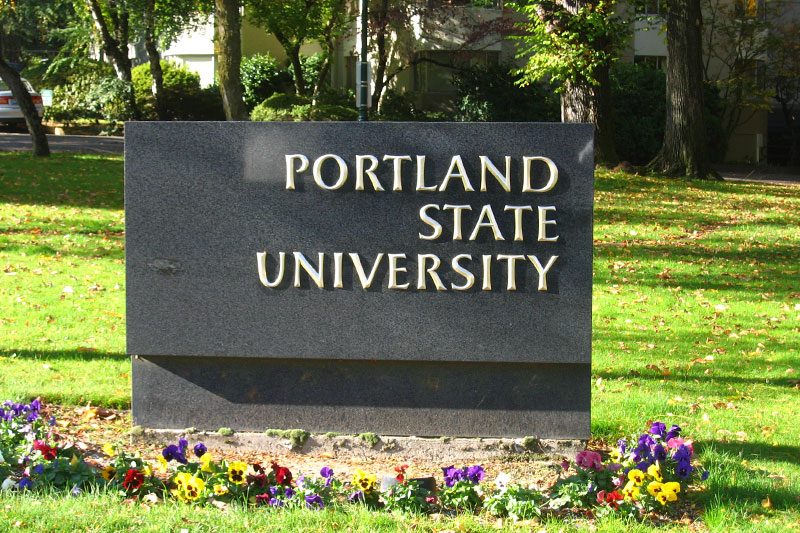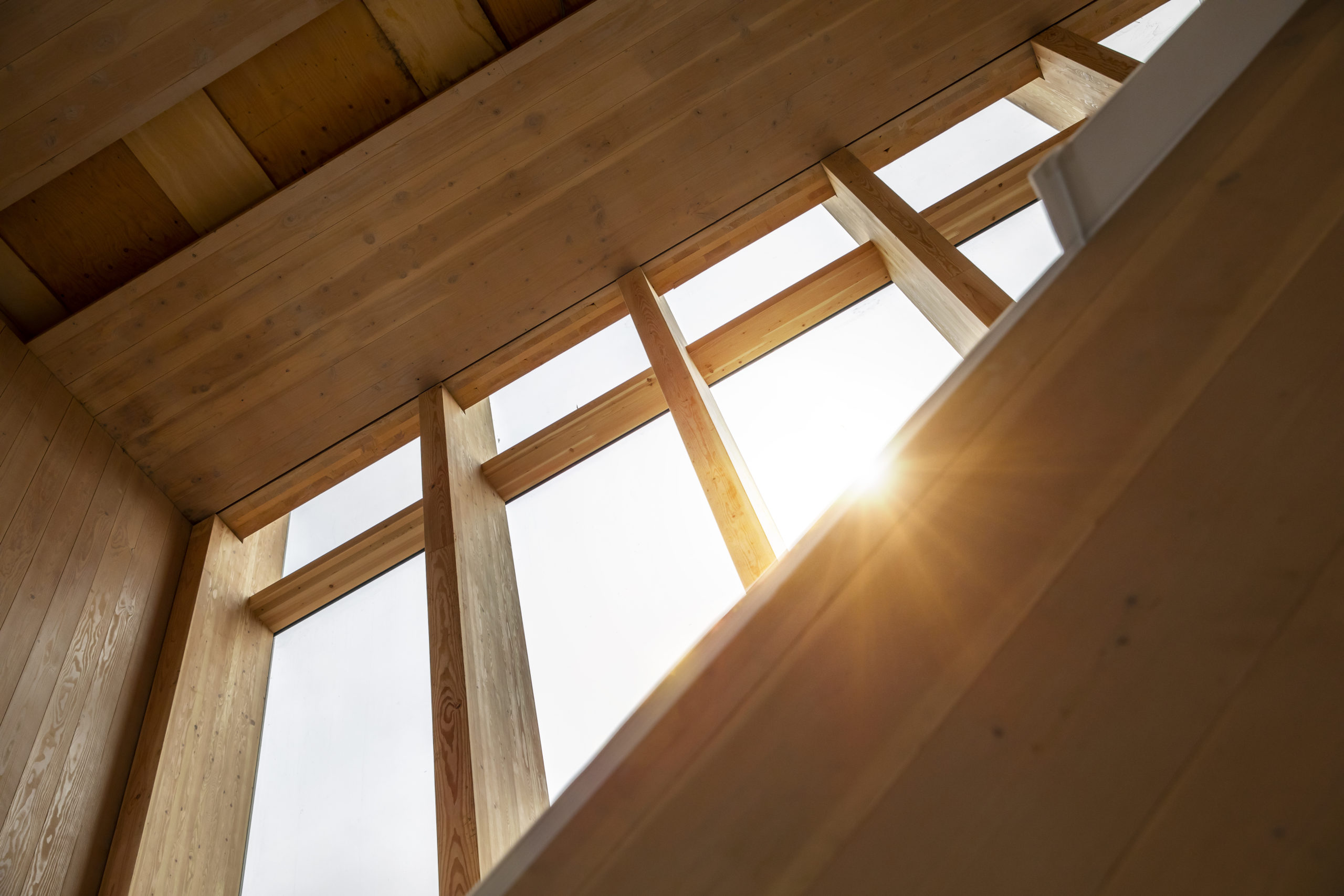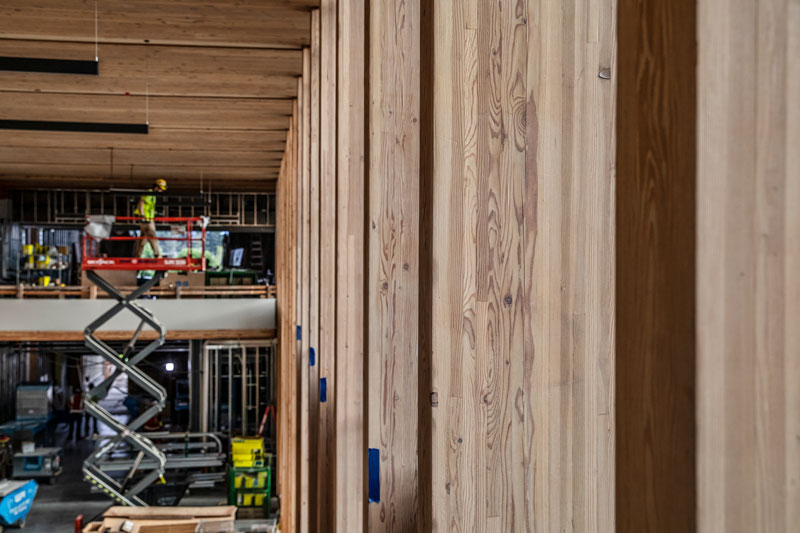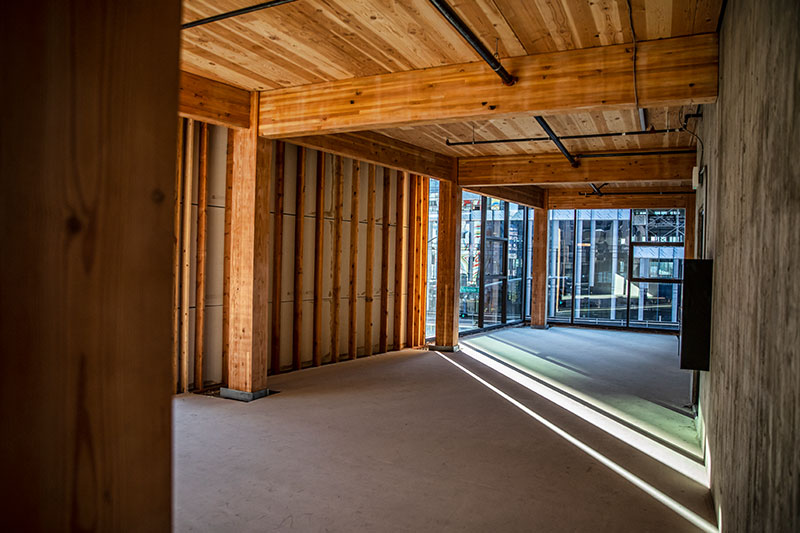Via Portland Tribune
Jennifer Anderson
January 3, 2017
When the 12-story Framework building planned at Portland’s Northwest 10th Avenue and Glisan Street is complete, it may look to passers-by like any other Pearl District condo tower.
Designers and engineers across the country are chasing an innovative style of mass timber construction pioneered in Europe, which they believe will go a long way to reduce the carbon footprint of large buildings.But it will hold a special distinction in the sustainable building world: the nation’s tallest building made primarily from mass timber (long pieces of timber, glue-laminated together).
The breakthrough came with the development of cross-laminated timber or CLT: Large, layered flat panels used as floors and walls (rather than just beams as vertical posts).
As Oregon moves on multiple fronts to take the national lead in all-wood construction for tall buildings, Portland State University stepped up early to do basic research. PSU won a three-year, $400,000 National Science Foundation grant to study two aspects of mass timber construction: its sustainability and how well it resists earthquakes.
Peter Dusicka, associate professor at PSU’s Department of Civil & Environmental Engineering, is the lead on the grant project. On Nov. 29, at PSU’s Infrastructure Testing and Applied Research Laboratory, Dusicka and his partners arranged a test of a section of mass timber structure for public viewing.
The tests involved a slow “racking” movement, simulating earthquake demands on a full-scale beam-column-floor assembly. The racking started at low levels and increased in intensity, the goal being minimal damage and no collapse.
The test — which drew a lot of regional interest — went well, Dusicka says. He’s now in the process of analyzing the detailed data that will inform the construction and design of the Framework, set to break ground next month and open in March 2018.
“Given the importance of seismic resilience for our region, this work represents a significant advancement of the state of the art in sustainable construction of high-rise buildings,” Dusicka says.
Framework will host ground-floor retail, five floors of office space, five floors of housing and rooftop space. PSU is collaboratng with Home Forward, Portland-based Lever Architecture, KPFF Consulting Engineers and Walsh Construction, and the project is supported by a U.S. Department of Agriculture award of $1.5 million from its Tall Wood Building Prize Competition
The PSU tests “really provided the viability and resiliency of this type of construction,” says Thomas Robinson, principal at Lever Architecture, which is based in a four-story Albina Yard building that is the first stand-alone mass timber building in Portland.
D.R. Johnson Wood Innovations, the state’s first manufacturer of cross-laminated timber, based in Riddle, recently became the first producer in the nation to pass critical tests designed to gauge flame spread and fire resistance.
“This is the first time in North America that a CLT panel has achieved both of these fire safety requirements, which is excellent,” says David Barber, principal at Arup and one of the nation’s leading fire protection engineers. “It’s a sign that advanced wood products, when engineered to the highest standards, are a safe alternative to other traditional building materials.”
As awareness grows, mass timber is likely to become more common in tall structures in Portland and beyond.
A big wakeup call for the construction industry came in 2010, when the U.S. Energy Information Administration revealed that 45 percent of the carbon dioxide emissions released into the atmosphere come from buildings. Past efforts at reducing emissions focused on trying to make buildings energy-efficient, Robinson says. The potential for mass timber construction, he says, “is to look at the amount of energy that is embodied in the construction of the buildings themselves and how to do that more sustainably.”
Not so counterintuitive
How can cutting down trees be good for the environment, giving buildings made with cross-laminated timber a claim to be greener?
Nowadays, most mid- to high-rise buildings in the United States are made from concrete and steel.
Both are nonrenewable resources that require intensive manufacturing processes, with substantial carbon emissions.
Timber is a renewable resource. And as it grows in the forest, it absorbs carbon dioxide.
“Timber is a carbon sink,” explained Amir Shahrokhi, project director at SHoP Architects in New York City at a recent Timber in the City Symposium in New York City. “Wood is always a fraction of the embodied carbon as the other materials are — concrete being the highest.”




